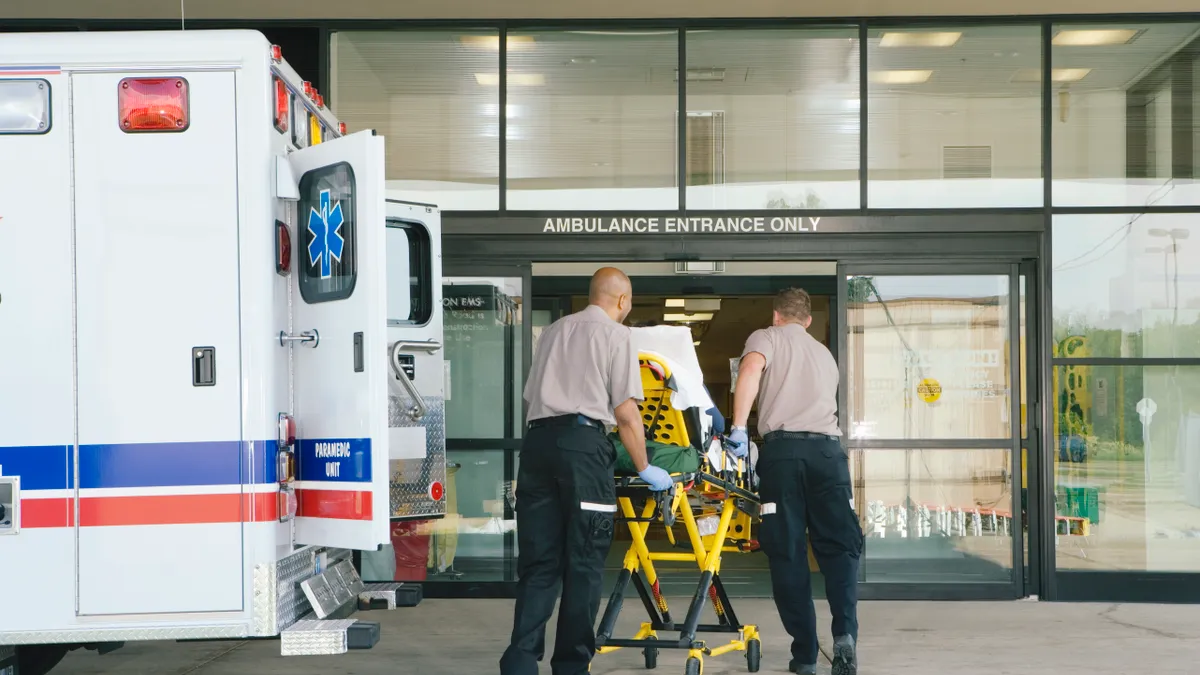Dive Brief:
- The market for mechanical thrombectomy devices to treat ischemic stroke could double in size in the next five years, supported by favorable clinical data and policy changes aimed at improving patient access to the technology, analysts at Jefferies said Friday in a research report.
- About 6% of ischemic stroke patients now get the treatment, an interventional procedure to remove a clot from a patient's artery, the report said. Jefferies analysts surveyed 25 neurosurgeons, who expect to see greater use of all forms of mechanical thrombectomy and an expansion of the overall market as stroke treatment protocols are adjusted.
- Companies that stand to benefit from growth in mechanical thrombectomy procedures are Stryker, Medtronic and Penumbra.
Dive Insight:
Two clinical studies, Dawn and Defuse 3, published in the New England Journal of Medicine last year, challenged the assumption that patients who didn't reach a stroke center for treatment within six hours of initial symptoms would not benefit from mechanical thrombectomy.
Based on findings that patients showed better outcomes with a thrombectomy performed as much as 24 hours after the onset of a stroke, the American Heart Association and American Stroke Association recommended new guidelines for identifying which patients might benefit from the procedure beyond the six-hour window.
Stroke patients now receive the clot-dissolving drug tPA under the current standard of care. Patients are then evaluated to determine eligibility for mechanical thrombectomy. Patients transported by ambulance are often routed to the closest hospital, which may not be a stroke center, and they may then need to be transferred to a facility capable of performing a mechanical thrombectomy.
Specially equipped mobile stroke units first introduced in the U.S. in 2014 are expected to increase in use and could result in more patients being routed directly to stroke centers, the Jefferies analysts said. In addition, several states have passed laws aimed at improving access to stroke centers for first responders, with momentum expected to spread to more states, the report said.
The Jefferies analysts forecast the current $300 million market for mechanical thrombectomy could more than double to $700 million by 2025, calling their estimate conservative. Technological advancements, changes to state policies and investment in stroke centers could further propel the market to $1 billion, they said, making a larger contribution to neurovascular revenue at Stryker and Medtronic.
Stryker's neurotechnology division, which includes mechanical thrombectomy, reported net sales growth of 19.8%, to $1.48 billion, in the first half of 2019. Jefferies models ischemic stroke revenue of about $56 million for the company in 2019, growing to between $93 million and $122 million in 2022.
For Medtronic, the brain therapies division within the restorative therapies group contains mechanical thrombectomy. Restorative therapies generated revenue of $2.01 billion in the company's fiscal first quarter, up 3.2%. Jefferies expects the company to generate revenue of $168 million from the procedure in fiscal 2020, increasing to $237 million to $317 million in fiscal 2022.
Penumbra's neurovascular division produces about 60% of overall company revenue. The company reported total revenue of $262.6 million in the first half of 2019. Jefferies expects the neurovascular business to post revenue of $157 million in fiscal 2020 and $175 million in fiscal 2021. An additional $18 million in 2020 and $40 million in 2021 is possible in a bullish scenario, the analysts said.









